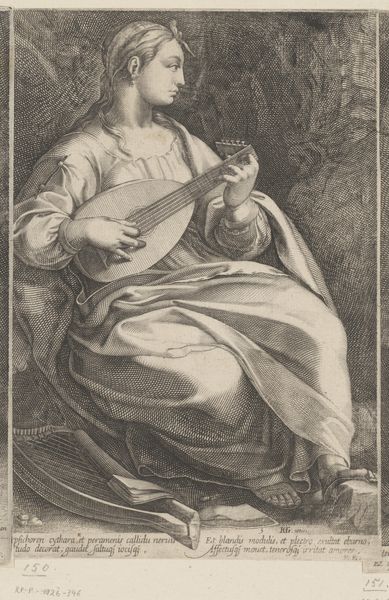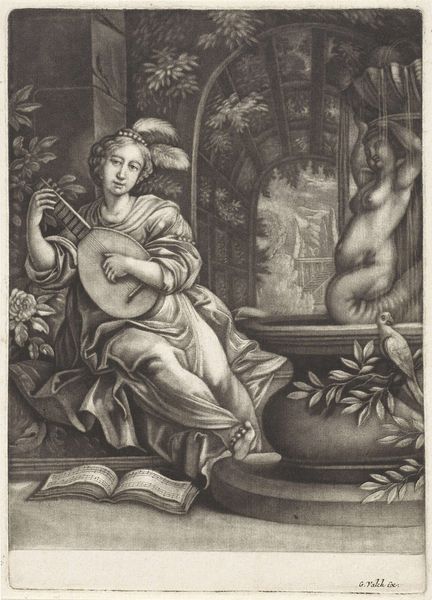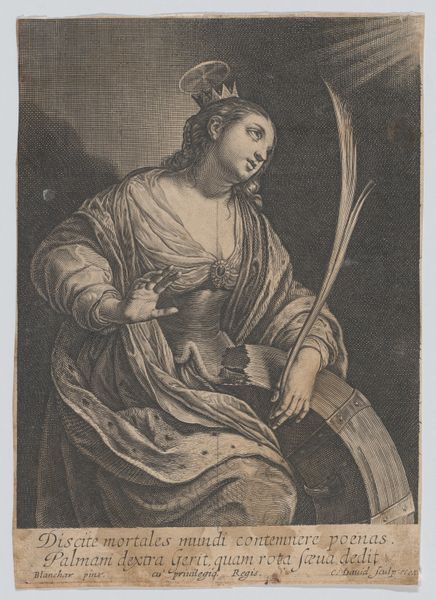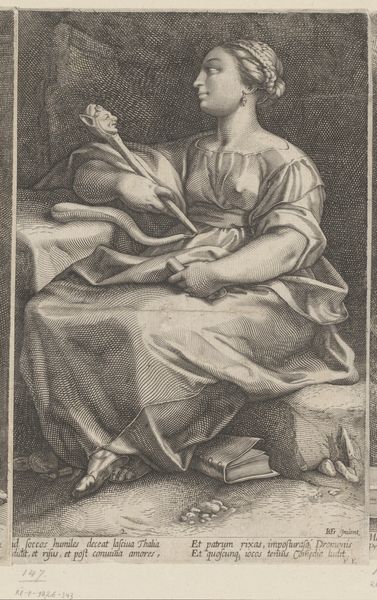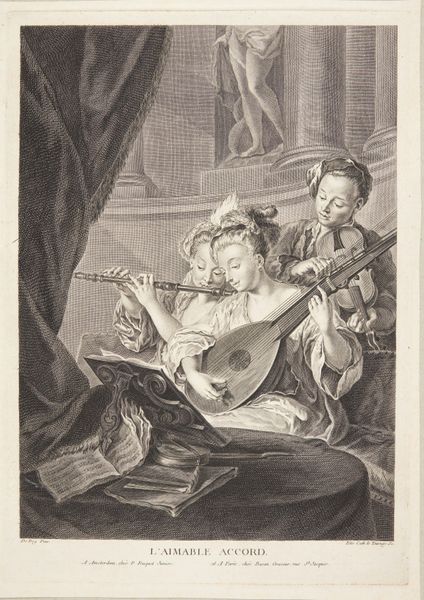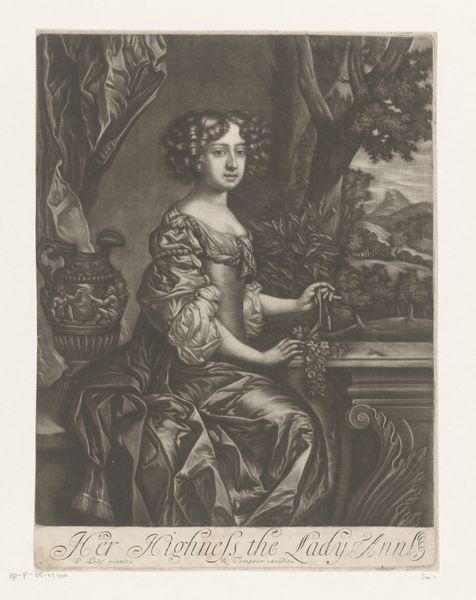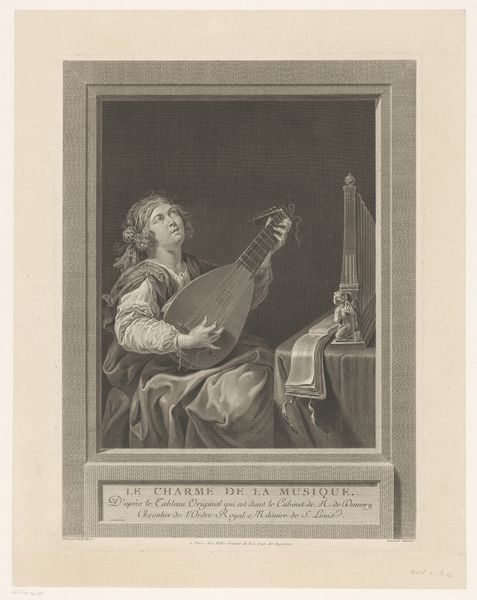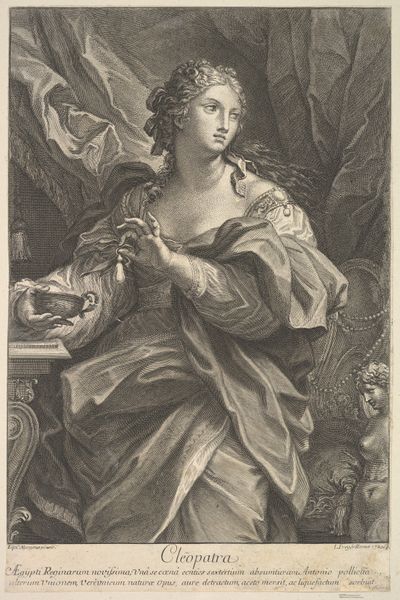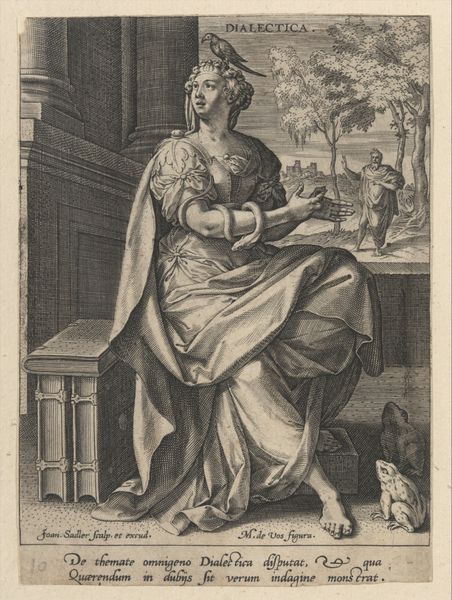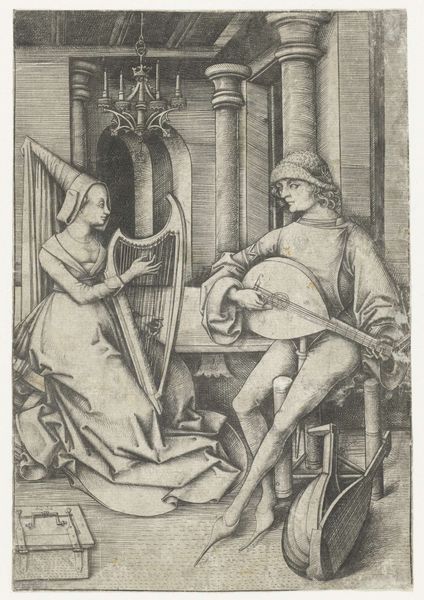
Lady playing the guitar, "Madame Davis"; after Sir Peter Lely's painted portrait, c. 1674 of Mary Davies in the Earl of Bradford collection 1748 - 1781
0:00
0:00
Dimensions: 240 mm (height) x 247 mm (width) (bladmaal)
Editor: So, we're looking at "Lady playing the guitar, 'Madame Davis'", a print created between 1748 and 1781 by Thomas Watson, after Peter Lely’s original portrait. It’s a mesmerizing etching and engraving. The way the light plays across her satin gown, I get a sense of relaxed intimacy. What leaps out at you when you see this? Curator: Intimacy is a wonderful starting point. I’m curious – does it strike you as authentic, or perhaps… staged? Consider the column and drapery in the background. They lend an air of classical grandeur, but does that align with the sitter’s relaxed pose and attire? Mary Davies was an actress and mistress of Charles II, known for her captivating performances, but does that backstory change your impression of what you are seeing? It's almost as if Watson, working from Lely, is inviting us to peek behind the curtain of courtly life, or maybe invent a new narrative with imagined layers and personal resonance. It reminds me of certain dream. Editor: I hadn’t really considered that performative aspect. Now that you mention it, the guitar seems almost like a prop, a symbol of leisure and refinement. But that sheen and sparkle really is compelling in rendering that fabulous satin robe and shiny tresses... Curator: Exactly. And note how Watson captured those textures solely through line and tone. Incredible isn't it? This almost obsessive quality that makes one pause. Don’t you think that these prints allow for a wider audience to engage with art and, more importantly, with notions of identity and representation? Editor: Absolutely! Seeing it as more than just a pretty portrait changes everything. I will always read these types of images differently from now on. Curator: That’s the beauty of art, isn’t it? It holds a mirror to ourselves, but also shows us entirely new horizons.
Comments
No comments
Be the first to comment and join the conversation on the ultimate creative platform.
